Ceropegia petignatii
This plant is native to Madagascar and is so new that it isn't in my reference list. The first one I ever saw was at Dr. Jerry Barad's Greenhouse about three years ago (1996?)
I got a nice fat stem that looked like a pinkish dried lizard with too many legs from Dr Barad, and took it back to my greenhouse in Staten Island. After my experience with armandii, I put it on to a similar bed of leca stones where it rooted but did little else. Eventually, after the cold night without heat it succumbed to a slow, creeping, black death.
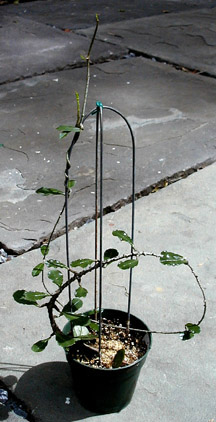 |
At the beginning of this summer (99) I ordered two cuttings (Tissue cultured) from Paul Shirley. When the cuttings arrived, I was surprised to see shiny green leaves on them. I put them in my propagation box and when they began to show roots, I potted them up. One cutting is so vigorous that I had to add a support for it to grow on. I hope that it will bloom before the season ends. |
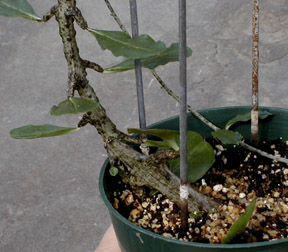 |
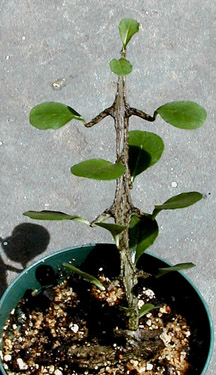 | This is the slower cutting. This picture shows the leaves and stem structure a little better.
Of all of the cuttings I received from Mr. Shirley, this is the plant I expected to lose. But both the pettignattii and the armandii rooted, slowly but surely. The plants that I lost were the arabic species, plants that I thought would be easier to root and grow. |
|
This is a scan from ASKLEPIOS 70, the magazine published by the Asclepiad Society, a society well worth joining. See Links for contact information. |
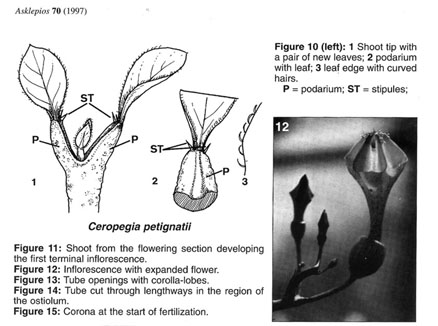 |
April 2001- The pettignatii plant grew wonderfully and began to bloom in 1999. As September arrived the plant was brought into the greenhouse where it began to show signs of the black death. I lost the plant. |  |
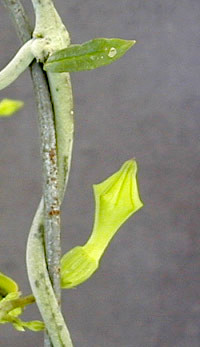 | The other cutting that wasn't growing very well was taken inside my house where the air was drier and was put into an terrarium with a plastic lid in a window. I shaded the window when the plant showed signs of bleaching from the sun. It occurred to me that though these plants are from a arid habitat that it is most likely rocky, and the plants are really growing in the shade of the rocks or desert shrubs. The climbing part of the plant is only to put the flowers in the path of wind and flying insects. Here are some pictures of the first plant and its flowers. | 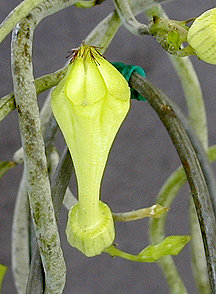 |






